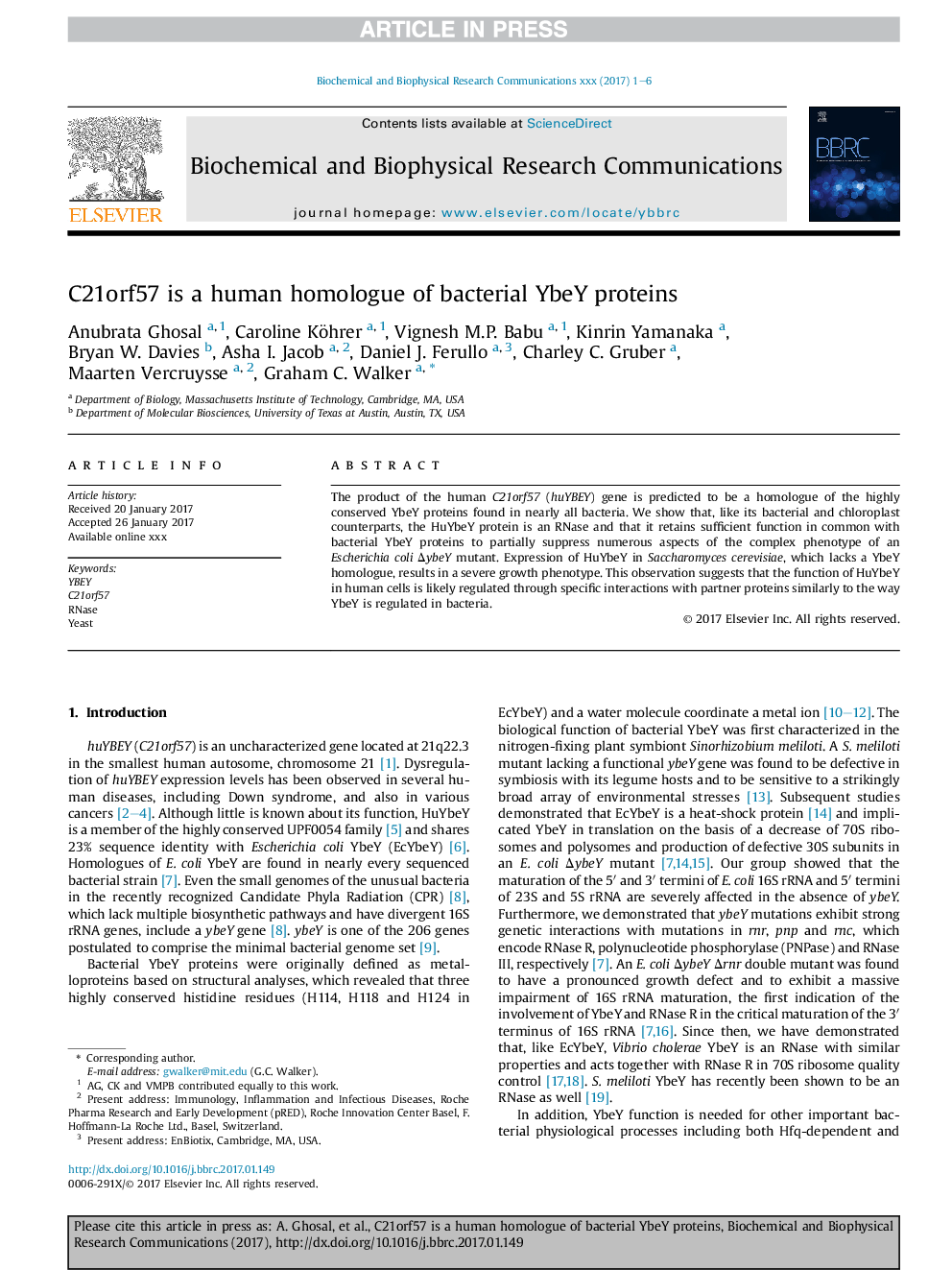| Article ID | Journal | Published Year | Pages | File Type |
|---|---|---|---|---|
| 5505437 | Biochemical and Biophysical Research Communications | 2017 | 6 Pages |
Abstract
The product of the human C21orf57 (huYBEY) gene is predicted to be a homologue of the highly conserved YbeY proteins found in nearly all bacteria. We show that, like its bacterial and chloroplast counterparts, the HuYbeY protein is an RNase and that it retains sufficient function in common with bacterial YbeY proteins to partially suppress numerous aspects of the complex phenotype of an Escherichia coli ÎybeY mutant. Expression of HuYbeY in Saccharomyces cerevisiae, which lacks a YbeY homologue, results in a severe growth phenotype. This observation suggests that the function of HuYbeY in human cells is likely regulated through specific interactions with partner proteins similarly to the way YbeY is regulated in bacteria.
Related Topics
Life Sciences
Biochemistry, Genetics and Molecular Biology
Biochemistry
Authors
Anubrata Ghosal, Caroline Köhrer, Vignesh M.P. Babu, Kinrin Yamanaka, Bryan W. Davies, Asha I. Jacob, Daniel J. Ferullo, Charley C. Gruber, Maarten Vercruysse, Graham C. Walker,
